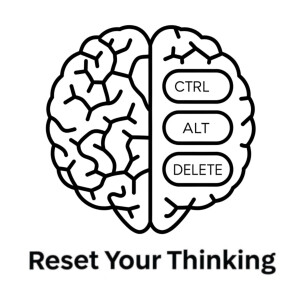
Wednesday Jan 22, 2025
Session: Vision Building Day 1
EOS Vision Building Day 1 Session Guide
Overview: This document provides a detailed guide for facilitators (Implementers) leading a Vision Building Day 1 session within the Entrepreneurial Operating System (EOS) framework. The session aims to crystallize the leadership team's vision, ensuring everyone is "100% on the same page" regarding the company's future. It focuses on defining core values, core focus, and the 10-year target. It emphasizes the importance of "Traction first, Vision second," building upon the foundation established during the earlier "Focus Day" session.
Key Themes and Ideas:
- Building on the Focus Day Foundation:
- The Vision Building Day 1 session directly follows the Focus Day, reinforcing and expanding on the tools and concepts introduced there. The session starts with reviewing the Focus Day tools to ensure "mastery = understanding (common vocabulary) and implementing (fully integrated)." This includes reviewing concepts like "Hitting the Ceiling" and the "Five Leadership Abilities" (Simplify, Delegate, Predict, Systemize, Structure).
- The "Accountability Chart" is a key tool carried over from the Focus Day, with a significant portion of the session dedicated to refining it and addressing "Right People, Right Seat" (RPRS) issues.
- The V/TO (Vision/Traction Organizer) and the 8 Questions:
- The core of the Vision Building process involves answering "The 8 Questions™ in the V/TO®." This serves as a "Simplified approach to strategic planning...all in two pages/no 50-page plans." These questions encompass:
- Core Values
- Core Focus
- 10-Year Target
- Marketing Strategy
- 3-Year Picture
- 1-Year Plan
- Quarterly Rocks
- Issues List
- Day 1 focuses on the first three: Core Values, Core Focus, and 10-Year Target.
- Core Values: Defining the Culture and "Right People":
- The process for discovering core values involves identifying employees who exemplify the company's ideal culture. Implementers ask the leadership team to "think of three people that if you had 100 of them, you could take over the world."
- Core values are "a small set of essential and timeless guiding principles" (3-7 is the recommended range). They define the company's culture, attract the right people, and should be used for "hire, fire, review, reward, and recognize."
- The session involves identifying characteristics of the exemplary employees, then filtering those characteristics to identify the true core values, avoiding "value traps" like "Permission to Play," "Aspirational," and "Accidental" values.
- The People Analyzer is used to assess how well leadership team members embody the defined core values. This tool will be used to "set the bar / the standard for the company."
- A "Core Values Speech" is developed to consistently communicate the company's values.
- Core Focus: Defining the "Sweet Spot":
- The "Core Focus" is defined as the company's "reason for being, what it’s world-class at." This is also described as the company's "sweet spot."
- It's comprised of two key elements:
- Purpose/Cause/Passion: The "why" behind the company's existence. Examples include "Disney – To make people happy" and "EOS Worldwide – Helping entrepreneurs live their EOS Life."
- Niche: What the company does better than anyone else. Examples include, "Walgreens – Most convenient drugstores" and "Starbucks – Premier purveyor of the fi nest coffee in the world".
- The Core Focus should act as an "internal fi ltering/guiding mechanism" to prevent distractions ("shiny stuff").
- 10-Year Target: Setting a "Larger-Than-Life Goal":
- The 10-Year Target is a long-term (5-30 years) goal that provides a clear direction for the organization. It's described as a "S.M.A.R.T. goal" (Specific, Measurable, Attainable, Realistic, Timely).
- Examples include "Coca-Cola – Put a Coke within the reach of every human being on the planet" and "EOS Worldwide – 1,000,000 companies Running on EOS®".
- Traction First, Vision Second:
- EOS philosophy prioritizes building a foundation of "traction" (discipline and accountability) before focusing on vision. "Vision without traction is hallucination." The Focus Day tools lay this foundation.
- The Role of the Implementer (Facilitator):
- The Implementer acts as a facilitator, guiding the leadership team through the discovery process and ensuring alignment.
- They must be prepared, organized, and able to effectively manage time and discussions. The Implementer is expected to "...rehearse session" prior to the meeting.
- A key aspect is managing expectations and ensuring the team understands the objectives and agenda. They are responsible for making sure "...expectations are clear and achievable."
- The Implementer actively identifies and addresses potential issues, adding them to the "Issues List" for later resolution.
- Practical Considerations:
- The guide includes a detailed preparation checklist, including pre-session emails, room setup requirements, and necessary materials (easels, markers, snacks, beverages).
- The guide outlines a specific agenda with time allocations for each segment. The Session at a Glance details the intended time allocation.
- There are specific post-session actions, including completing a debrief and ensuring payment.
Quotes:
- "Vision without traction is hallucination."
- "Mastery = understanding (common vocabulary) and implementing (fully integrated)."
- Core values are "a small set of essential and timeless guiding principles."
- “People don’t lead, purposes do.”
Key Takeaways:
- Vision Building Day 1 is a crucial step in the EOS process, designed to create a clear and unified vision for the company's future.
- The session builds directly on the foundation of the Focus Day, emphasizing the importance of traction and accountability.
- The Implementer plays a critical role in facilitating the discovery process, managing discussions, and ensuring alignment among the leadership team.
- The V/TO and its 8 Questions provide a structured framework for defining the company's vision and plan.
No comments yet. Be the first to say something!